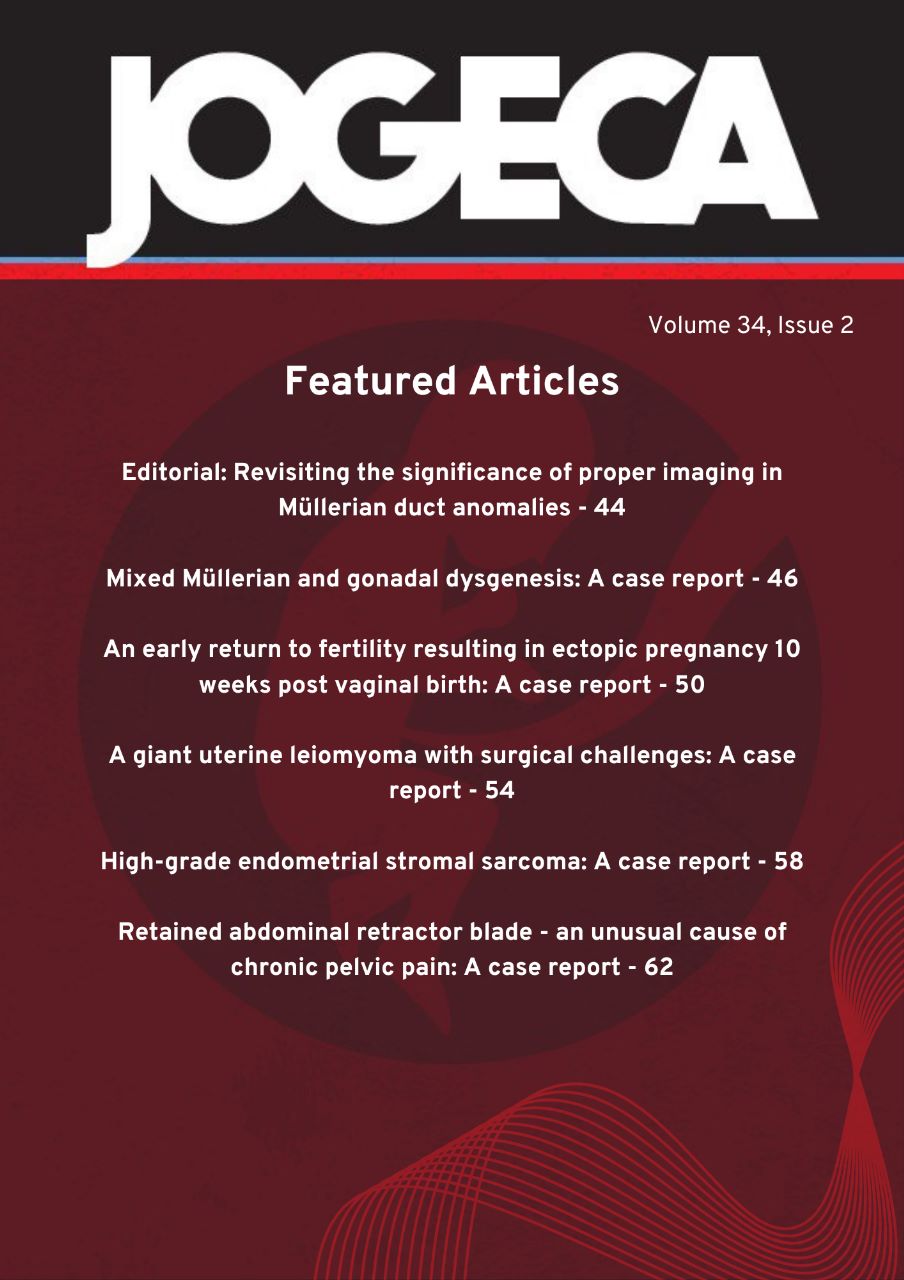Clinical characteristics and management outcomes of patients with hydatidiform mole in a national referral hospital in Kenya: A retrospective study
DOI:
https://doi.org/10.59692/jogeca.v35i3.55Keywords:
complete mole, hydatidiform mole, molar pregnancy, partial mole, trophoblastAbstract
Background: Hydatidiform mole is a benign form of gestational trophoblastic disease with potential for malignant transformation. It is characterized by abnormal trophoblastic proliferation with placental villi vascular welling with or without embryo formation.
Objective: To determine patient clinical characteristics and management outcomes of hydatidiform mole diagnosed at Kenyatta National Hospital, Nairobi, Kenya.
Methods: A descriptive retrospective study design was employed. The medical records of patients admitted with a clinical diagnosis of hydatidiform mole at the Kenyatta National Hospital between January 2013 and December 2017 were retrieved. Data were collected using an abstraction tool, entered, and analyzed using the Statistical Package for Social Sciences (SPSS) version 22 (IBM, Armonk, NY, USA). Categorical data were summarized into frequencies and proportions and continuous data into means, standard deviations, medians, and interquartile ranges.
Results: During the study period, 137 records of patients admitted and managed for hydatidiform mole were retrieved. Most, 110 (80%) and 97 (71%) patients were 20-34 years old and multiparous, respectively. The mean gestational age at presentation was 17 weeks (SD 7.4), and bleeding was the most common symptom in 105 (77%) patients. Only 46 (34%) patients had documented histological confirmation of the hydatidiform mole. None of the patients completed six months of follow-up; hence, there was no documentation of treatment outcomes.
Conclusion: In this study, the clinical presentation of the hydatidiform mole was relatively uniform, but the approach to definitive diagnosis, management, and follow-up was suboptimal and inadequately documented. Hence, management outcomes cannot be objectively determined.
Downloads
Published
How to Cite
Issue
Section
Categories
License
Copyright (c) 2023 The Authors.

This work is licensed under a Creative Commons Attribution 4.0 International License.




